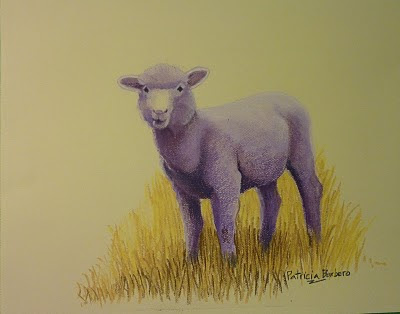
There are literally tons of resources out there...
here is a collection of books I borrowed from the local Library, and a couple of my own.
Some of these books have step-by-step instructions that guide me through to the finished painting.
Copying a master's work is also a good exercise, as I don't need to worry about composition and can concentrate on technique instead. I have done a few of those and enjoyed the challenge, and will continue to do so. My favourites are the Impressionists, but there are a lot of contemporary artists whose work I admire.
There are also video recordings of artists teaching different aspects of pastel painting. I find these quite enjoyable and learn a lot from them, especially since each artist has a different approach to the whole process.
Some are on DVD, others can be downloaded from the Internet. I get these from The Artists' Network (see link)
Some of these artists have their own websites and blogs, and share freely of their knowledge.
Then there are the publications: I subscribe to The Pastel Journal, a bi-monthly magazine that I read from cover to cover. There are previous issues for sale in downloadable form, or a whole year on DVD; see link.
I have listed all the books in this photo in the Resources section of this blog.
There are also, of course, dedicated teachers that offer workshops in their studios or teach at Community Centers and Art Schools. I participate in an Open Studio class with Judy Perrin at the Calgary School of Art and I am learning lots and having fun in the process.
Judy is a great teacher, the group is lighthearted and dedicated and the facilities are great. Having the ability of buying your supplies on the spot certainly helps. The Calgary School of Art is located within the Cactus Art Supplies in S. E. Calgary.
 Meet Harry, a Pig with a Purpose.
Meet Harry, a Pig with a Purpose.
























